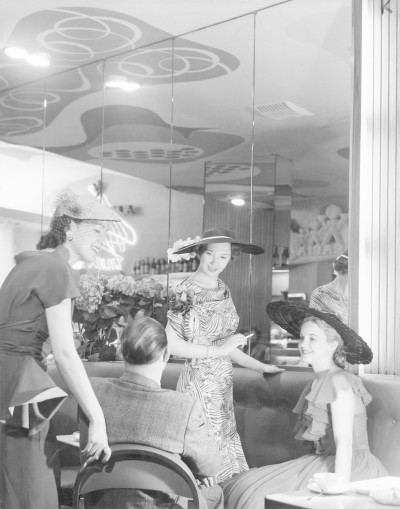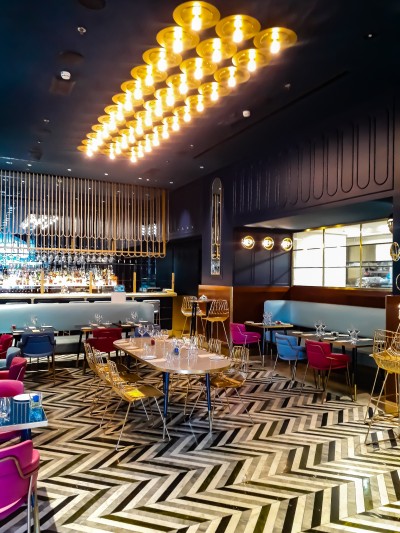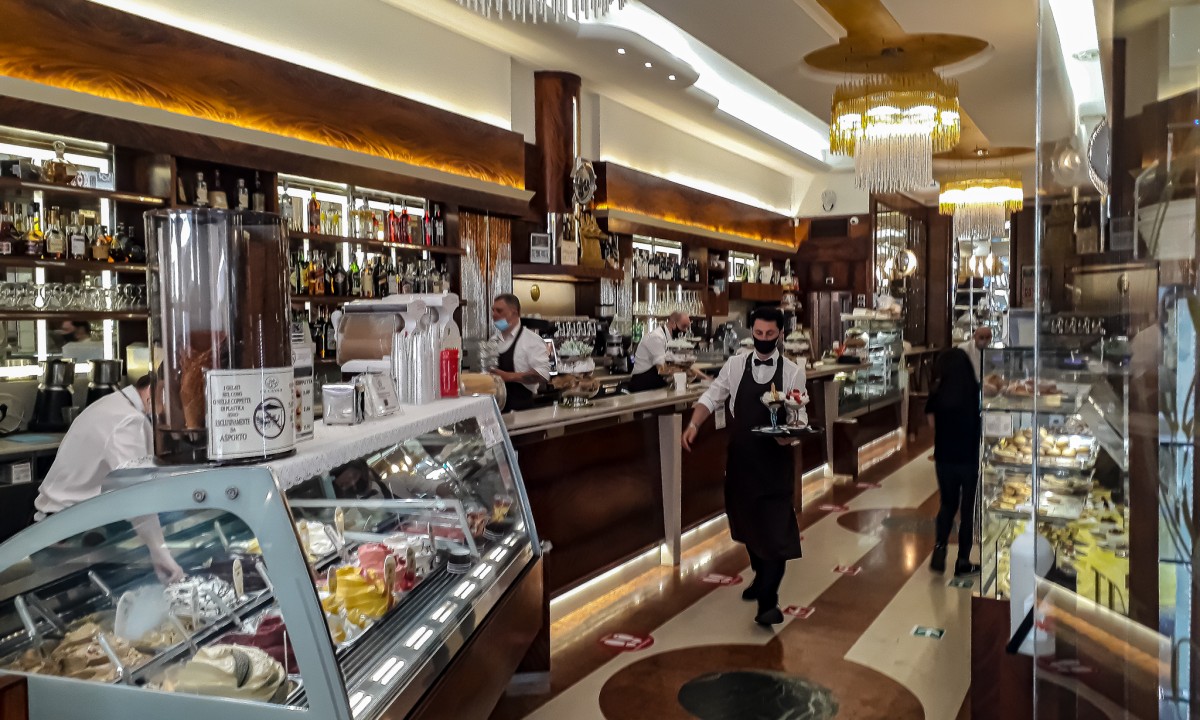In November 1950, the architect Oswald Haerdtl sent an employee of the Viennese coffee wholesaler Alfred Weiss to Milan to take a close look at the espresso bars there with regard to their appearance and the way they served their customers. Because half a year later, the joint project by Haerdtl and Weiss, the Espresso Arabia on Kohlmarkt, was to open in the center of Vienna and bring Italian gusto and joie de vivre to the war-torn and scarred city. Alfred Weiss had survived the Shoah together with his wife in Rome. Returning to their hometown in 1947, they had fought to regain ownership of their “Aryanized” company “ARABIA Kaffee-Tee-Import.” With the premises on Kohlmarkt, Weiss wanted to renew his brand’s presence and name recognition. Oswald Haerdtl had also worked for the National Socialists during the war. What type of relationship Haerdtl and Weiss had to each other and how Weiss dealt with Haerdtl’s past behavior are not known, since only business correspondence has survived. A letter from the architect to the graphic artist Josef Binder, who developed a corporate identity for Arabia as early as the 1930s, testifies to the respect he had for Weiss: “As you know, Mr. Weiss is extremely active and one has to say that he is one of the few people in Vienna who is doing something for progress.”
08. August 2022
Vienna and the World
“How does Motta do that?”
by Sabine Apostolo

© AzW, Image: Otto Tomann
The scouting trip by Arabia employee Ewald Emig to Milan is documented by a letter in which Haerdtl gave precise instructions as to which details he should pay attention to at which bar. Today we don’t know exactly what Emig’s journey looked like. Of the ten bars that are not always named, at least three of them can still be visited today: The Motta and the Biffi, both in the Galleria Vittorio Emanuele II in the immediate vicinity of Milan Cathedral, and Le Tre Gazzelle on Corso Vittorio Emanuele II.
The one or the other detail was to also be adopted in a similar form at Arabia on Kohlmarkt. Such as the cashier system at Motta, which appears to be surprisingly modern: the payment and collection of the order took place at two different locations in the establishment – just like at today’s international coffee house chain with the siren logo. In fact, the internationally known service system used at the chain beginning in the 1980s found its inspiration in Milan, but only thirty years later. Motta also operated an upstairs area where customers were served – and that was of particular interest to Haerdtl and Weiss: They knew their Viennese clientele and were aware that an Italian bar could not last without the familiar coziness. Right from the start, they planned a “restaurant” part to linger in. However, it was unclear to them how best to execute the orders in this area for products from the espresso zone and wanted to know: “How does Motta do it?”

© Jewish Museum Vienna

© Jewish Museum Vienna
They were inspired by Biffi to set the espresso machines up “the other way around.” In Italy, the machines traditionally face the guests, but not so at Biffi and, therefore, not in Café Arabia and other Austrian coffee houses. Haerdtl describes the toilet facilities there as “particularly pretty” and recommends that Emig take a look at them: “You will be surprised at how beautifully they are equipped.” Today, unfortunately, all of that charm has been lost.
In Le Tre Gazzelle, the special feature Haerdtl emphasized was that the “coffee brewer serves the beverages himself, that is, without intermediary staff” – today guests are served ice cream variations at their seats.
The letter ended in November 1950 with the following sentences: “I would recommend that you put this down in writing straight away. I would forget almost everything if I didn't write it down.” None of these notes exist today – or Ewald Emig simply memorized everything and explored and enjoyed the Milan bars without taking notes. In any case, a good portion of Italianità was imported to Vienna with Café Arabia – and you can see it for yourself at the exhibition “Espresso at last! The Café Arabia on Kohlmarkt.”
Sources:
Sabine Apostolo, Michael Freund, eds., Espresso at last! The Café Arabia on Kohlmarkt. Vienna 2022.
Adolph Stiller, ed., Oswald Haerdtl: Architekt und Designer, 1899-1959. Salzburg 2000.
In Le Tre Gazzelle, the special feature Haerdtl emphasized was that the “coffee brewer serves the beverages himself, that is, without intermediary staff” – today guests are served ice cream variations at their seats.
The letter ended in November 1950 with the following sentences: “I would recommend that you put this down in writing straight away. I would forget almost everything if I didn't write it down.” None of these notes exist today – or Ewald Emig simply memorized everything and explored and enjoyed the Milan bars without taking notes. In any case, a good portion of Italianità was imported to Vienna with Café Arabia – and you can see it for yourself at the exhibition “Espresso at last! The Café Arabia on Kohlmarkt.”
Sources:
Sabine Apostolo, Michael Freund, eds., Espresso at last! The Café Arabia on Kohlmarkt. Vienna 2022.
Adolph Stiller, ed., Oswald Haerdtl: Architekt und Designer, 1899-1959. Salzburg 2000.

